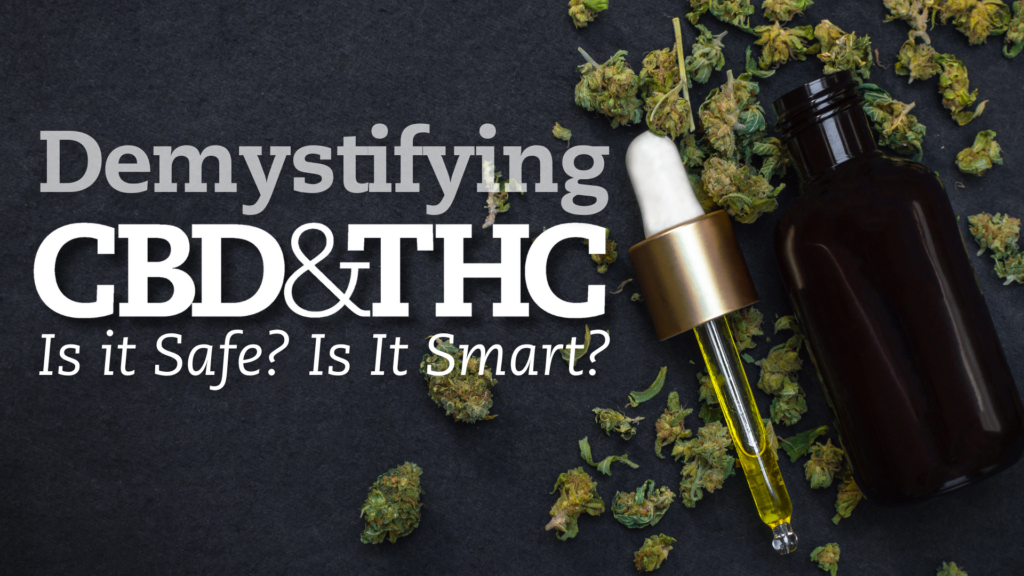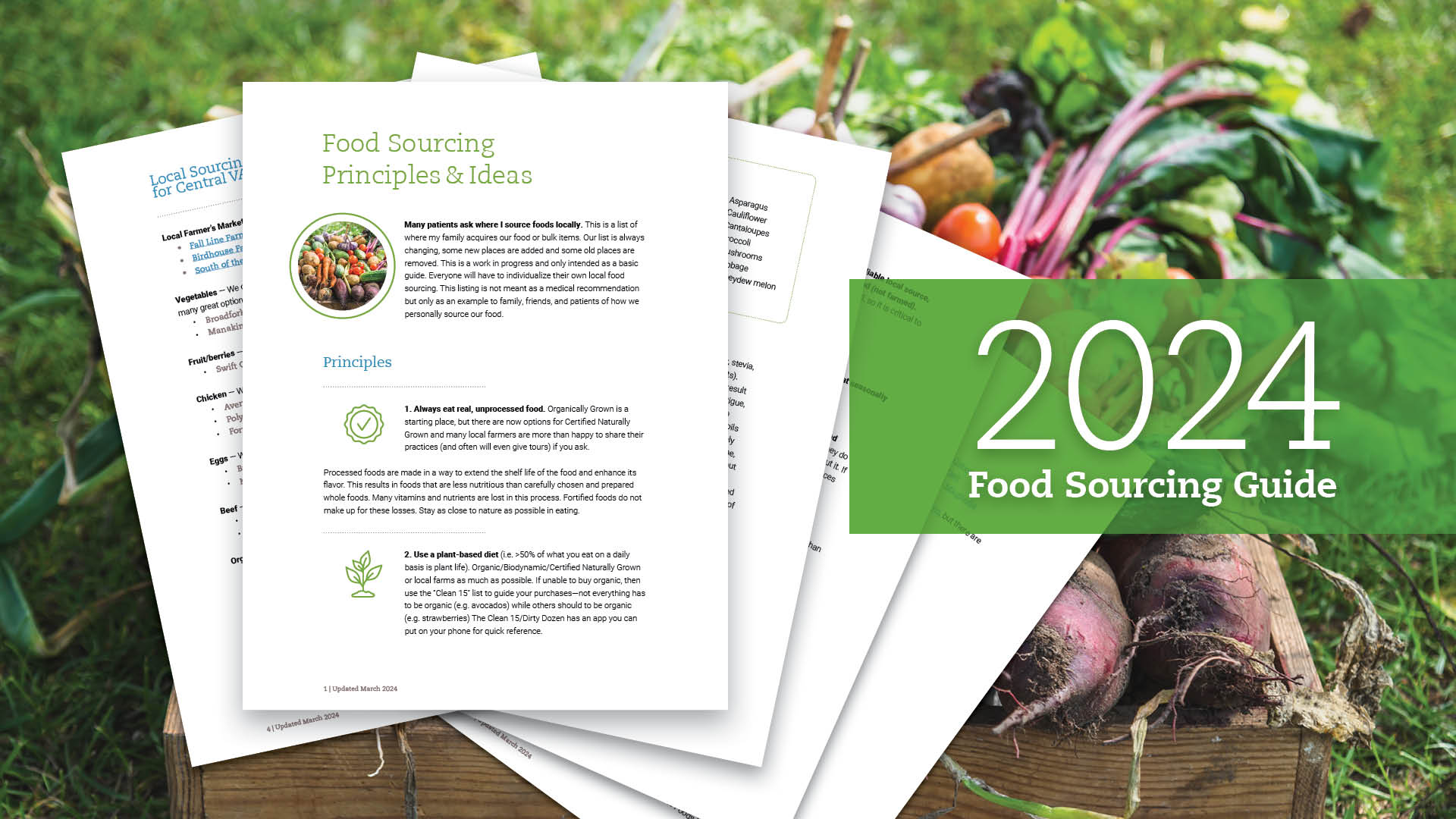Straight Talk About Supplements | Part 4
Demystifying CBD & THC
Is it Safe? Is It Smart?

Aaron Hartman MD
November 7, 2023

Subscribe
Never miss out on new content from Dr. Hartman.
I often receive questions about CBD & THC. My patients wonder if one (or both) might be helpful for them. They ask about the benefits and risks, and they want to know how they might find a quality product that is safe and effective. Are you also wondering if they’re right for you?
In this article, I’m going to tackle the most common questions surrounding CBD & THC.
We’ll start with the basics, types of CBD products, and their effects. We’ll learn the differences between CBD & THC and uncover the intricacies of full-spectrum, broad-spectrum, and isolate CBD. Finally, we’ll talk about how you can find a clean, safe product.
Get ready to demystify CBD & THC in order to make informed choices for your health and well-being.
Defining Some Terms
There is a lot of confusion around this topic, so let’s begin by defining some of the terms.
- Cannabis is the genus of plant which includes marijuana and hemp.
- Marijuana is used to describe cannabis with more than 0.3% THC (tetrahydrocannabinol).
- THC (tetrahydrocannabinol) is the mind-altering substance in marijuana that produces the traditional “high”. One very important fact to know about marijuana is that, because of hybridization since the 1960s, most plants today have a much higher concentration of THC.
- Hemp is a cannabis plant that has 0.3% or less THC; hemp does not produce psychoactive effects.
- CBD (Cannabidiol) is a non-psychoactive substance derived from the cannabis plant.
In general, hemp plants contain more CBD, while marijuana plants contain more THC.
While Delta 9 is the “natural” THC that we’re more familiar with, Delta 8 is a newer version that is somewhat of a “designer drug.” It’s a slightly modified form of THC and tends to be less potent than regular Delta 9 THC, but there are still significant side effects. The doses tend to be a little higher. Since it’s less regulated, it’s difficult to know what dose you’re getting or the quality of the product.

Full-Spectrum & Broad-Spectrum CBD vs CBD Isolates
- Full-Spectrum CBD Products — extract substances from the entire plant, so these naturally include trace amounts of THC.
- Broad-Spectrum CBD Products — include all of the beneficial compounds, including those with anti-inflammatory effects. However, the THC molecule is removed in broad-spectrum products.
- CBD Isolates — include a pure form of CBD. CBD isolates only contain CBD and none of the other plant compounds.
The problem with CBD isolates is that we’re learning that other non-CBD plant compounds can be very beneficial — enhancing the benefits of CBD. We call this the “entourage effect,” meaning that many of the benefits derived from CBD are the result of the hundreds of other types of cannabinoids, such as terpenes, plant phytosterols, chemicals, and omega 3s.

Because of this entourage effect, in order to get a result similar to a full-spectrum product, the dosing of a straight CBD isolate must be nearly ten times higher. To put it into perspective, a full-spectrum CBD dose of 10 mg is as strong as 40 mg of a pure CBD isolate, which is more expensive and more difficult to source. Higher doses also come with more side effects, so that is another benefit to a full-spectrum CBD product vs an isolate.
Medical use of these products has shifted toward clean, full-spectrum products which include all of the cannabinoids. Again, these do have a little bit of THC, since it occurs naturally in the plant. However, CBD tends to counteract some of the effects that come from the THC, so when using a full-spectrum product, you’re less likely to get the side effects related to THC. It’s very important to know that using a full-spectrum CBD product can possibly cause a drug urine test to have a positive result for THC.
It’s also helpful to know that you can’t really get intoxicated from CBD. Even at high doses, you might experience a sedative effect and feel tired, but CBD doesn’t have the psychoactive effects of THC. This makes CBD much more useful for the general population.
Full-spectrum products include a variety of different compounds that can benefit the whole body using the endocannabinoid system with a lower dose and fewer side effects.
For these reasons, I recommend using full-spectrum products.
Why is CBD Such a Hot Topic in Medicine?
Exploring the Endocannabinoid System
The endocannabinoid system (ECS) is a fairly recent medical discovery providing opportunities for new pharmaceuticals and therapies.
CBD and THC affect the body through the ECS. This system spans your entire body and regulates important functions. It oversees essential jobs in various areas like memory, emotions, sleep, pain, body temperature, and even how we handle inflammation, immunity, and appetite.

Cannabinoid receptors — you may have heard of them referred to as CB1 receptors — are primarily on neurons in your brain. These receptors are like the conductor of an orchestra, regulating body temperature, hormones, heart rate, and many other functions of the body’s regulatory systems. Our bodies naturally produce cannabis-like substances — called endocannabinoids — to regulate systems in the body.
We also have another type of cannabinoid receptor — called CB2 — which works more in the immune system. These receptors control many functions in the GI tract including pain and inflammation. Since immune cells are found throughout the body, you can see how modulating these CB2 receptors can have many useful effects. Stimulating this CB2 receptor also does not result in the “high” that comes with stimulating the CB1 receptor. Many drug companies and researchers are excited about the potential new drugs and therapies that could use the CB2 receptor.

The Benefits and Risks of CBD & THC Products
So what benefits do we see in the use of these products? We now have over 40 years of valuable research, which offers significant insight into the effects of these substances.
Therapeutic Uses for CBD & THC
We know that the dysregulation of the endocannabinoid system can impact various conditions including heart inflammation, pancreatitis, and neurological conditions like Parkinson’s and Alzheimer’s disease. While more research needs to be done, CBD & THC are being studied for their therapeutic use in these conditions. In animal models, activating the endocannabinoid system with CBD & THC demonstrates potential in controlling tumor and tissue growth as well as reducing cancerous inflammatory cells.
These findings hint at potential applications, but what about real-world usage?
Evidence-based effectiveness of CBD & THC centers around three key areas: anxiety, pain, and sleep. These domains have garnered extensive attention from clinical and pharmaceutical research, as well as people seeking relief. When we consider how anxiety, pain, and sleep relate to the gut, immune system, and neurological functions, the significance of the endocannabinoid system becomes evident.
THC has significant benefits for anxiety, pain, and sleep. This is why full-spectrum CBD products that do have small amounts of THC can be advantageous. I prefer full-spectrum CBD products because I find them to be the most beneficial due to the benefits of all of the plant compounds working together, including a small amount of THC.
Some of these compounds are terpenes, which are plant chemicals that come from herbs. Cannabis contains terpenes, and so a full-spectrum CBD product has a lot of terpenes as well. Terpenes can have anti-inflammatory, immune-modulatory, and gut-healing effects. Some of the research on the tumor growth inhibitory and brain protection effects of CBD is related to terpenes. There’s also a lot of interesting research coming out using CBD to protect the brain from traumatic brain injuries. The question is, is it purely a CBD response? Or is it from this entourage effect? Probably a little bit of both.
Risks & Side Effects
Most of the risks and side effects of these substances center around THC. An obvious side-effect is the intoxicating effect caused by THC.
What are some other side effects people can get from THC that are worrisome?
Psychosis — Breaks with Reality
About 5% of the population is susceptible to psychotic episodes triggered by THC. Psychosis is a break from reality that might include paranoia, hallucinations, delusions, confused thinking, and altered speech. While it is usually temporary, for some people cannabis-induced psychosis never truly goes away.
Psychological Disorders
THC use — whether from marijuana or a THC product — can also trigger the onset of other serious psychological disorders such as anxiety disorders, bipolar disorder, and schizophrenia. THC use over time can uncover tendencies toward these disorders, which is very concerning.
Because today’s marijuana and THC products have much higher concentrations of THC, they’re so much more powerful than the marijuana from the 60s and 70s. That is why we’re seeing more of these tragic side effects.
Stunted Brain Development
THC can block brain development, which is very concerning for young people. The adolescent brain, particularly the frontal lobe, continues to develop into the late 20s. The reason that 18-year-old males tend to have less foresight and are prone to riskier behavior is that the prefrontal cortex is not completely developed. When young people use THC, that development can be blocked, which can potentially prevent the brain from fully developing.
Synaptic Lengthening
Another concern I have is something called synaptic lengthening, which can happen with long-term THC use. Lengthening synapses slow the transmission of nerve potentials, so nerves have a more difficult time communicating. This can cause disinhibition syndrome, which is the loss of motivation and drive.
Reduced Testosterone in Men
Long-term THC use in men can lower testosterone levels and increase estrogen. This can cause increased breast gynecomastia, which is the enlargement of breast tissue. You may have heard this referred to as “man boobs.”
Exposure to Heavy Metals and Toxins
Because there are no quality standards when it comes to Delta 8 products, these products are more likely to contain solvents, heavy metals, and other chemicals. So Delta 8 products are more likely to cause toxin exposures, which is something to consider when thinking about Delta 8 THC products versus your standard THC Delta 9 or your other CBD products
As you can see, risks associated with THC are serious and can include psychosis, potential psychological disorders, brain development hindrance in adolescents, synaptic lengthening, lower testosterone in men, and toxin exposure in Delta 8 products.

Is it Safe to Grow My Own?
I get many questions about the safety of smoking or consuming marijuana, and whether growing it is a safer way to source it. This is an important question.
I have several concerns around marijuana in general:
- The marijuana we have today has been hybridized and cross-pollinated to have MUCH more THC than the backyard marijuana of the ‘60s. Today’s marijuana is extremely potent.
- All of the other risks listed above — including reduced testosterone, male breast enlargement, psychosis, and synaptic lengthening — become even more prevalent from the use of marijuana with higher THC levels.
- Especially in young people, marijuana can push people into psychosis. THC can bring out underlying tendencies toward bipolar, mania, and schizophrenia.
- My biggest concern with backyard marijuana is that it increases the likelihood our young people will try it. This is extremely risky due to the high THC content. Because their brains are not fully developed yet, they have a much higher risk of:
- Schizophrenia, bipolar, or mania
- Synaptic lengthening, which causes disinhibition syndrome and a lack of drive
- Stunted brain development
- Suppressed testosterone
- Infertility
40–60% of our youth have tried marijuana. If you consider that 5% of the population is at risk for psychosis, that is an alarming number of our youth at risk for life-altering mental conditions resulting from trying marijuana.
How Can I Find a Safe Product?
One of the reasons I prefer full-spectrum CBD products is that they have a larger therapeutic window. This just means that there is a wider range of dosing that is safe and effective with minimal side effects. In medicine, we are seeing that the use of THC products, even the pharmaceutical versions, is waning because of the safety and efficacy of full-spectrum products.
Sourcing a CBD product is very similar to sourcing any other kind of supplement. You want to ensure you are buying a clean product that is not tainted with chemicals or heavy metals. Buying from a trusted manufacturer is important so that you know that it’s been tested appropriately. I recently wrote a detailed article on how to vet your supplements, so I won’t go into all of those points here. However, there are two specific concerns when it comes to CBD and THC products that you should be aware of:
- Crops are often sprayed with pesticides, mercurial arsenates, and other chemicals which can wind up in the end product, so sourcing and testing are key. No matter what kind of product you use, it is imperative that you know your source. You want to make sure you’re getting a clean product.
- CBD should be extracted using a distillation process so that the product is actually cleaned. Other products are extracted using solvents, which can contaminate the end-product.

Recommended Product
It is very important to me that any product I recommend, first and foremost, does no harm. I make sure that the products I recommend are clean, safe, and have been tested.
The kinds of quality products I want to recommend are similar to the ones currently being researched and studied at the NIH and universities such as the University of Colorado and the Eastern Virginia Medical Center. We use these high-quality, pharmaceutical-grade products.
Personally, I recommend Designs for Health full-spectrum CBD products. They use CBD from Ananda, a quality manufacturer I trust.
Due to regulations, we are not able to sell CBD products in our supplement store. We are excited to offer a special promotion to you, our valued patients and readers. Just click the button to learn more about DFH’s CBD products including Cannab FS, Cannab PEA, and CannabOmega.
Conclusion
I hope this article helped to clarify your understanding of CBD & THC products. While there are serious side effects and risks with THC products and marijuana, we know that full-spectrum CBD products have many benefits and there are even more promising applications on the horizon. Whether you’re new to CBD or a seasoned user, this article demystifies these compounds to empower you to make informed choices for your health and well-being.
